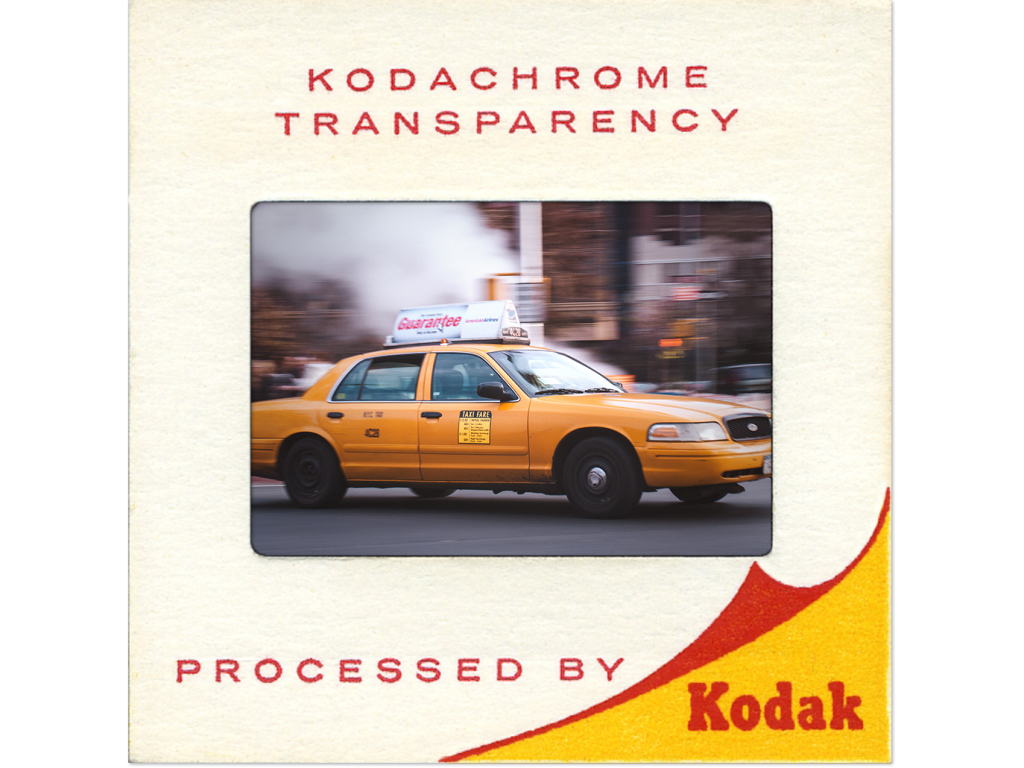Kodachrome Lightroom Preset Pack: Custom-built Kodachrome presets and profiles, based on original Kodachrome slides, ready to use in Lightroom and Adobe Camera Raw.
Kodachrome
I’ve written at some length about Kodachrome in the past and particularly the challenges faced when trying to build a reasonable digital emulation of the film.
Firstly, to be clear, you can’t replicate Kodachrome slide film. I’m putting that sentence right up front in the hope of deterring any photo-forum-dwelling purists from sticking pins into my effigy.
The only way you can truly create a Kodachrome image is by shooting Kodachrome film. There, I’ve said it and hope that’s clear.
Sadly, Kodachrome is no more and even if you were to find a dozen rolls inside a dusty trunk in your grandfather’s loft, you won’t find a processing lab with the technology to process it. Kodachrome is not merely pining for the fjords, it has truly ceased to be.
However, in what started out as a purely personal project, I’ve been able to reverse engineer some digital values based upon some old, colour-calibrated Kodachrome slides. It took considerable time but I was able to build profiles for specific cameras, providing emulations for Kodachrome 25 and Kodachrome 64.
These profiles are quite unique. They’re not simply a series of presets designed to give a rough approximation of Kodachrome’s tones and hues, they’re custom profiles based on precise calibrated values of original Kodachrome transparencies.




Read more: Kodachrome 35mm (1935-1962) – Kodak Ektachrome E100
What was Kodachrome?
For the benefit of my millennial readers, Kodachrome was a slide or transparency film introduced by Kodak before the Second World War and discontinued in 2009. The film was enormously popular with amateur and professional photographers alike and many of the iconic images associated with magazines like National Geographic were shot on Kodachrome. Steve McCurry’s ‘Afghan Girl’ portrait was shot on Kodachrome, for example (and later digitised but we’re not opening that can of worms right now).
Kodachrome might have been consigned to history but you can still find plenty of enthusiasts willing to talk in glowing terms about its properties.
If you want to impress in one of the Interweb’s Kodachrome forums, chip in with phrases such as “I loved how Kodachrome’s lack of dye couplers in the emulsion resulted in reduced light scattering” and “I found that push-processing resulted in a magenta-red colour shift”. You’ll be welcomed with open arms.
Kodachrome Characteristics
Such adoration isn’t unwarranted. Kodachrome really did set the Gold Standard. As Kodak’s own Technical Data Sheet explains, Kodachrome’s characteristics included:
- Exceptional results in outdoor, travel, nature, advertising, medical and museum/art applications.
- Extremely sharp
- Extremely fine grain
- Reproduces subtle colour naturally
- Archival (Kodachrome films are the most archival transparency films)
I’m told that yellow is the least stable colour in a Kodachrome slide but even yellow tones will only show some noticeable fading after 185 years. I wonder how many computer hard drives will last that long.
Kodachrome’s subtle tones, biting contrast and dynamic range have been a significant stylistic contributor to our visual heritage so perhaps it’s understandable that we might be tempted to try and capture some of the magic of Kodachrome in our digital work.
As another example of the iconic status Kodachrome reached, you might like to read the rest of this article whilst listening to Paul Simon’s song, Kodachrome, in the background.
I miss shooting Kodachrome. There are worse things, of course, and I don’t lose sleep over it but if Kodachrome came back, I’d use it. One of the most exciting moments for many film photographers, other than actually taking photographs, was when a box of slides was returned from the processing lab and we’d hold them up to a window, one by one, examining them through a magnifying loupe. The tangible delight of holding a physical slide up to the light and peering into the frame to see the vibrant colours of the scene we’d captured seemed nothing short of magical. We were Light Wizards, capturing moments and shrinking them into our enchanted slide frames for eternity. Well, for 185 years, anyway.
Panoramic landscapes, sunrises and sunsets, family portraits, street scenes… we’d hand write captions in tiny lettering on small labels and stick them to the slide mounts. Some of us were fortunate enough to be able to forward slides to our editors and stock libraries. Most of us would compile slides into extensive slideshows to be projected onto one of those precariously balanced screens. Our audience of long-suffering friends and neighbours would try their best to stay awake but the darkened room and rhythmic hum of a slide carousel often combined to create a somnolent effect.
Kodachrome Challenges
However, back to the present. Given that we can manipulate our digital files in an almost infinite number of ways, surely there’s a way that we can recreate something of the essence of Kodachrome? It turns out that’s much easier said than done.
Firstly, Kodachrome slides were designed for projection. Most projectors gave a yellow tint from their tungsten bulbs. To counter this, Kodachrome had a slight but noticeable blue cast. Similarly, shadows tended to be intense to compensate for the human eyes’ perceptions of a projected image. If you wanted to build a digital emulation of Kodachrome (I think you can see where I’m going with this), should you build one based upon the contrasty, blue-cast slides or the more natural projected image? There are scanned versions of Kodachrome available but the variety of scanners and scanning processes introduce a tremendously unpredictable number of variations. Shadow density was really hard to unpack in a scan and scanners that hadn’t been accurately profiled would yield… well, you might as well have asked your kids to draw their interpretation of the scene onto their bedroom wall with crayons.
So how to proceed when there are so many variables and potential inconsistencies? I must admit that I’d pretty much given up any hope of building a reasonable Kodachrome emulation and put the idea on the back burner. However, some projects have a habit of niggling away until they’re given full attention. I like to think that’s an indication that they have some inherent value. I’ll let you be the judge of whether that’s proved to be the case.
It’s taken several weeks but I’ve finally arrived at what I think is a workable attempt at recreating some of the properties of Kodachrome. “How did you do that, Mr. Gough?”, I hear you enquire with customary politeness.
Well, dear reader, I shall offer you a very brief summary of the process.

Reverse Engineering
There are plenty of film simulation presets available online. Some are better than others. Many offer a pretty simple range of colour and tone adjustment shortcuts, which is fine. They’re a broad brush and if you’re looking for a one-click way of creating an old polaroid look then that’s OK. I’d describe it as the Instagram approach. One click. Faux film effect employed. Done. I was looking for something a little more specific.
I knew that I had some old Kodachrome film scans, which had been copied in a lab with a scanner profiled with an IT8 target. If you don’t know what that is, don’t worry, just be impressed that I do. Or, at least, that I claim to.
Assuming those scans were pretty accurate renderings of Kodachrome 25 and Kodachrome 64 slides (I don’t have any Kodachrome 200 scans, unfortunately), I did a kind of reverse engineering project on them. Using Adobe’s DNG Profile Editor, I was able to import the scans, employ a calibrated colour correction, then invert the values, which would, in theory, provide a way of turning the hues and tones of a standard digital file into the hues and tones found in a Kodachrome image. Voila!
Camera Specific Profiles
One of the problems with most of the Lightroom presets you’ll find online is that they’re not camera specific. You can throw a bunch of colour and tone adjustments at an image and it’ll change accordingly but it’s difficult to work with any degree of consistency, especially if you’re using more than one model of camera. The only way to create a profile that’s reasonably consistent is by building a unique profile for each specific camera model. And that, my friends, is not the work of a moment, let me assure you.
Once the initial recipes were created, I applied them to individual camera profiles, one by one. You know how there are profiles like “Landscape”, “Portrait” and “Vivid” in your camera settings and also in Lightroom’s Develop module? Well, those profiles are shortcuts to different ways of translating colours and tones from the raw data. I based all of my Kodachrome profiles on each camera’s “Faithful” or “Neutral” profiles (different manufacturers call them by different names).
Would you be surprised to learn that “Faithful” and “Neutral” profiles give the most faithful and neutral results? Perhaps that’s where they get their names? Who can say?
Kodachrome 25 &
Kodachrome 64
Though I say so myself, I like these profiles. I should point out that the profiles are not designed to alter a digital photograph in a sensational or radical way. They don’t give a Victorian sepia cast or apply some crazy cross-processing filter. That’s not what Kodachrome was about.
Kodachrome produced sharp images with reasonably accurate colour fidelity and, for the time, a pretty impressive dynamic range. But it also had other noticeable characteristics. It was pretty contrasty and had some slight colour balance shifts.
Kodachrome’s dynamic range reached about eight stops. The human eye sees a range of about 15 stops. That means that we can perceive much greater detail in shadows and highlights then the film could capture. Whilst digital camera manufacturers race to give us as much dynamic range as possible (the best digital camera currently available has a range of about 9.9 stops), I’m not convinced that I really want all that dynamic range. One of the attractions of photography for me is in knowing the limitations of the equipment and using it intentionally. When I photograph a Buddhist monk reading prayers in a darkened room, I don’t want dynamic range, I’m looking for the contrast to contribute to the atmosphere. That’s hopefully what will help the image resonate.
Knowing that Kodachrome – or any other film – had a limited dynamic range prompted us to learn how to expose for the shadows or highlights, according to how we wanted to render the scene. That kind of intentional control is – or at least it used to be – a significant part of the creative process.
The Kodachrome profiles I’ve built won’t provide a one-click means of creating a groovy, faded Holga effect and they’re unlikely to appear in the Top Ten List of Hipster Photo Filters. They do, however, recreate something of Kodachrome’s contrast with denser shadows and blacks that never quite reach 100% black. They impart fine grain, virtually invisible in Kodachrome 25 and only apparent in the Kodachrome 64 version if you really squint into the shadows. The subtle colour shifts are based upon projected versions of Kodachrome so you won’t be seeing funky pink skies or curious colour shift malarkey. The profiles won’t suit every image but then Kodachrome didn’t suit every scene.
Download
If you found the link was error , please comment !!!
Fast Download With Google Drive Link
Password Unzip : Msvyle.com
The file is compressed using Zip or Rar format…please use Winrar to extract this file
| Upload | Vy Le |
| Download | Download Free on Group Now! (zip) |
| Filesize | 56 KB |


